This post was originally posted on r/mk in 2020. I’m manually moving my content here before probably nuking my reddit account. Fuck that little pigboy u/spez.
A fey days ago, I showed you the very first keyboard I (my parents) ever had. It’s an IBM model M2 from 1989, that came with the family’s first computer an IBM PS/1.
I bought a PS/2 adapter and plugged it in my computer. Obviously, it had the dreaded “two LEDs on and nothing works” issue.
Fortunately, thanks to u/zorberema_'s great guide, I knew what happened. The capacitors were dead and I needed to replace them.
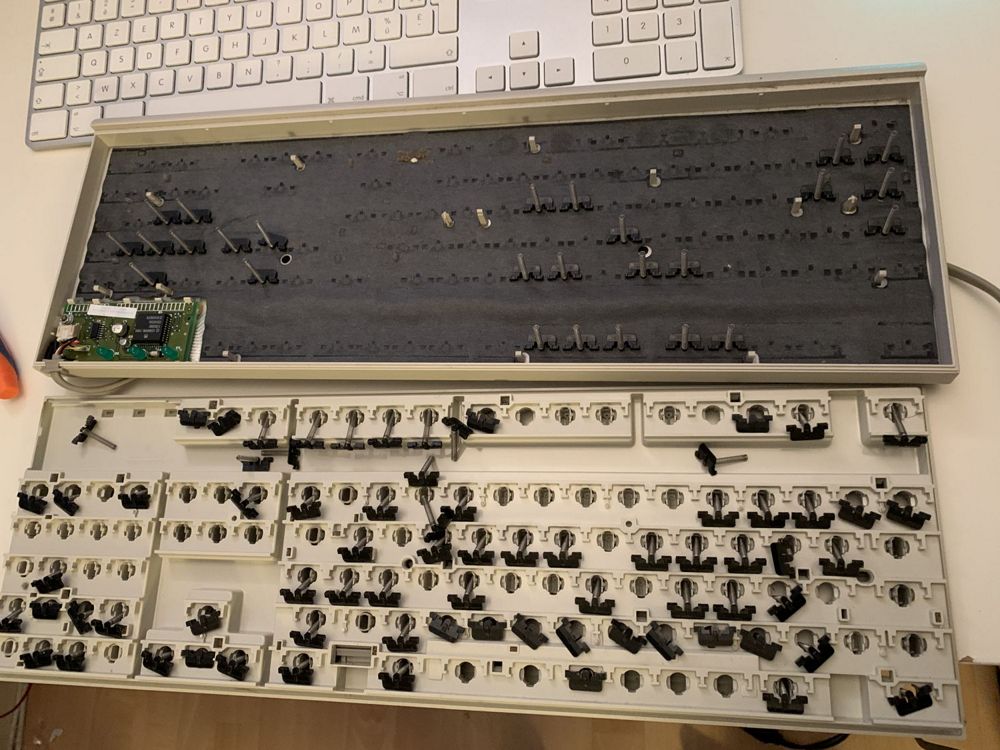 Well… Crap. Notice the Apple keyboard that… er… at least works.
Well… Crap. Notice the Apple keyboard that… er… at least works.
Opening it was actually easy-ish. I didn’t remove all the keycaps, only the ones necessary to get to the plastic clips, so a few springs went flying around, it was messy, lesson learned. I even managed to only break a single clip. Also, mark the spaces where springs are not supposed to go. You’ll thank me later. I spent an hour looking for a missing spring until I realized that I put one in an empty well.
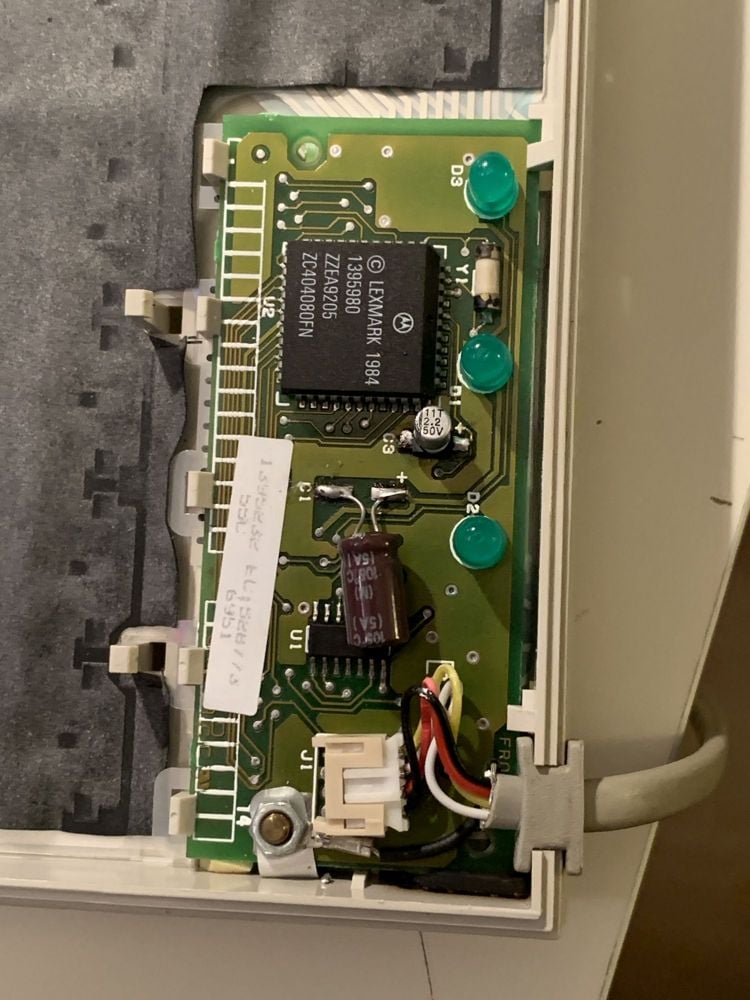 New capacitors in
New capacitors in
Notice how bad my soldering skills are. Pro-tip : If your friendly electronics sales-person gives you a surface mount cap to replace another surface mount cap, don’t. These are not made to be soldered by unskilled humans. This 2.2uF was hell. Higher voltage is fine.
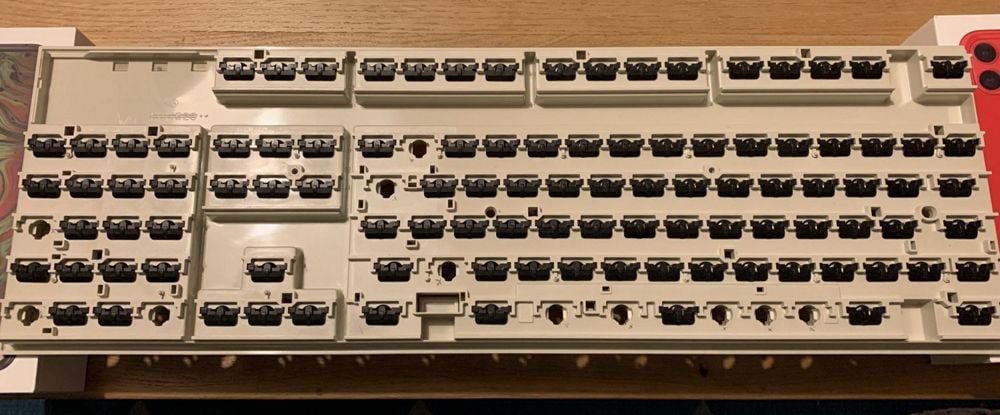 All the springs are back on
All the springs are back on
This part was long and stressful. I dropped the board once because I used crappy carboard boxes to prop the plate up, springs were flying around, it was terrifying. I don’t know how I managed not to lose them all. Lear from my mistake, use phone boxes as a prop.
(photo missing, sorry, I was both excited and scared) The trick to close a Model M2 keyboard is to keep said springs form flying around. The best way was is to peel the grey felt-ish mat from the membrane and to position it (upside down, obviously) over the springs, carefully aligning the clip and screw holes. From now on you can carefully snap the lower case back on the plate and screw it back in.
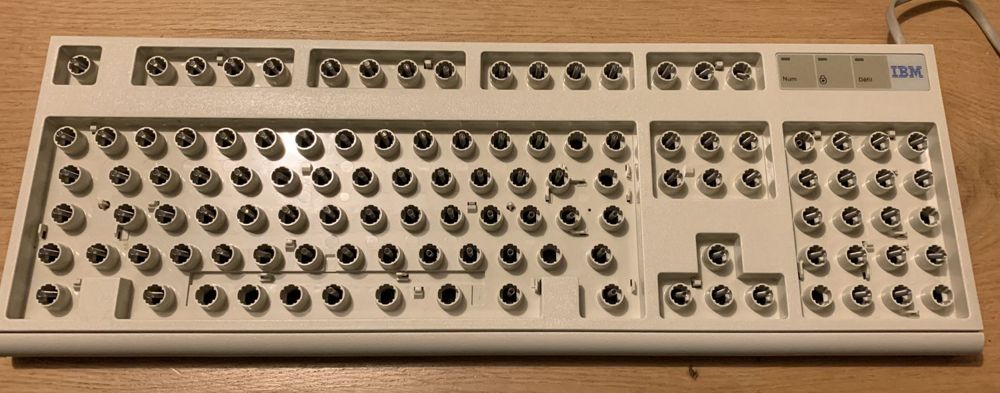 Here it is, in all its springy glory!
Here it is, in all its springy glory!
Form the sparse guides I found over the web, people seemed to say that this was the absolute worst part in restoring this type of keyboard. It went actually pretty smooth. YMMV.
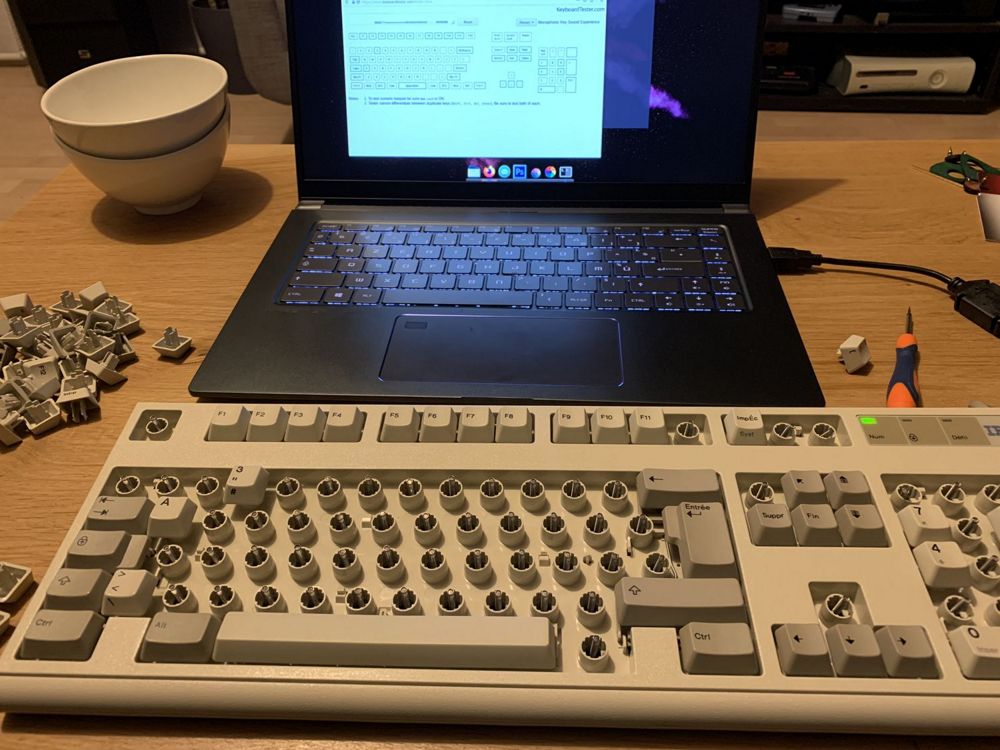 Putting caps back on and testing everything
Putting caps back on and testing everything
You can now put all your keycaps back on, testing them one at a time. I was fortunate enough to get a fully working keyboard, the membrane was intact. If the keys do not click or if you have to mash the key to get it to register, remove the cap and position it again.
So here I am, ready to output a massive amount of decibels while working from home during lockdown.
Stay safe my friends, keep clacking and don’t let the virus get you. ___


Haha i see. I really hope to see more apps supporting Linux natively in the near future <3